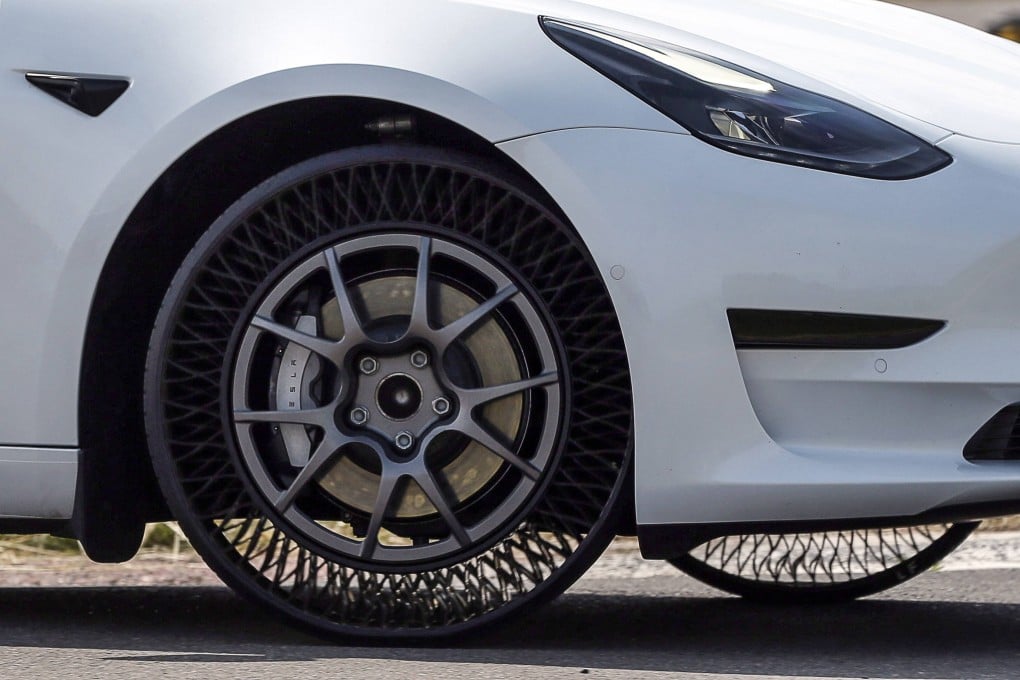‘Puncture-proof’ airless tyres edge closer to becoming a reality
- Instead of being filled with air, a web of spokes holds the tyre in place. The grip is not as good as on conventional tyres, however, and they are noisier
- Challenges are still being overcome, but US manufacturer Goodyear aims to have maintenance-free, long-lasting airless tyres for cars by the end of the decade

Airless tyres that never go flat or need to be inflated: it’s a decades-long dream that manufacturers hope to turn into a reality soon, but for truck drivers first.
The challenges that the technology faces were put on display at a Goodyear test track in Luxembourg, where a group of journalists put a Tesla equipped with airless tyres through its paces.
Instead of being filled with air, the tyres have a web of spokes that keep the wheels firm and give them a see-through look.

The thin layer of rubber gripping the asphalt has a gargantuan physical challenge to meet: supporting the weight of the car and absorbing shocks as well as standard pneumatic tyres for thousands and thousands of kilometres.
That challenge is being overcome: the tyre’s rubber and plastic structure resisted the huge stress as the car banked into the track’s tight turns.
The ride is smooth but the grip is not as good as on conventional tyres – and they are noisier.